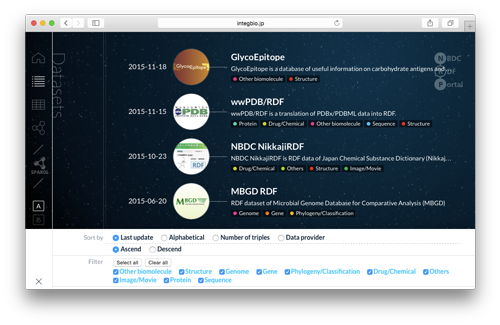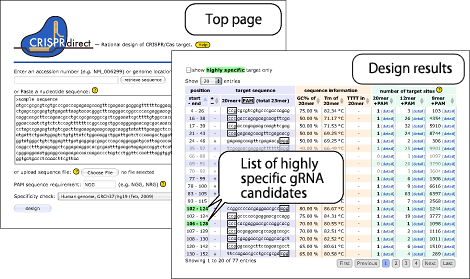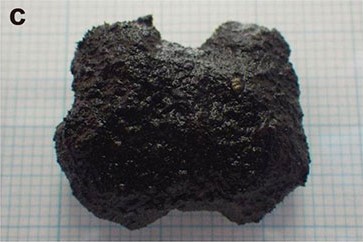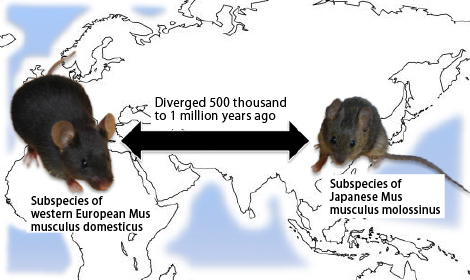Press Release
30-Nov-2015
Press Release | Launch of the NBDC RDF portal website

The first portal website in Japan that aggregates various life science databases in RDF format* has been launched by the Japan Science and Technology Agency (JST) (President: Michinari Hamaguchi) and the Research Organization of Information and Systems (President: Genshiro Kitagawa) (Figure 1). This portal site provides RDF datasets deposited by various research organizations, and allows the user to browse the description of those datasets, to download the data and to search the data using SPARQL (a standard query language for RDF data) queries.
21-Nov-2014
CRISPRdirect, software for designing guide RNA for genome editing, is released

Genome editing is a technique for introducing deletions or insertions in genomic DNA, and it is applied in numerous fields as an effective method for analyzing gene function and therapeutics. This research presents "CRISPRdirect" as software to design molecules called guide RNA (gRNA), necessary for the CRISPR/Cas9 systems, which is one of the most promising techniques in genome editing. The software efficiently designs highly specific gRNAs with fewer "off-target effects". Broad application and contribution of the software is anticipated as a powerful tool for genome editing in life sciences and medical research. (Yuki Naito, Project Assistant Professor, Database Center for Life Science)
- Link to press release
- Project Name: Database Center for Life Science (DBCLS)
- Link to article published in: British scientific journal, Bioinformatics online
- Link to software: "CRISPRdirect" website
18-Nov-2014
Endangered unique ecosystem in tropical glacier: moss gemmae aggregation on African glacier discovered

High mountains in tropical regions hide rapidly diminishing "glaciers." Investigation of ecosystems at one such glacier that borders Uganda and the Democratic Republic of the Congo unveiled the aggregation of organisms that consist mostly of moss covering the glacier. The moss was named "glacial moss gemmae aggregation (GMGA)" (see image), and was determined to be "Ceratodon purpureus," a Bryophyta also found in Antarctica. (Jun Uetake: Transdisciplinary Project Researcher, Transdisciplinary Research Integration Center/National Institute of Polar Research)
- Link to press release
- Project Name: Earth and Environmental System
- Link to article published in: U.S. Science journal, PLOS ONE
18-Apr-2014
A mechanism of genetic regulation evolving in different directions leads to new species!

It is known that two populations of common ancestry cannot reproduce when they have been geographically separated for a long time. This phenomenon, called "reproductive isolation" and widely seen in plants and animals, is one of the driving forces in avoiding genetic interaction and speciation. The reason for this had been attributed to the incompatibility of the X chromosome, one of the sex chromosomes, and autosomes. This study investigated the mechanism of the mystery at the molecular level using two subspecies of mouse. (Ayako Oka, Project Researcher, Transdisciplinary Research Integration Center)
- Link to press release
- Project Name: Genetic Function (Life) System
- Link to article published in: U.S. Science journal, PLoS Genetics
- Link to synopsis: National Institute of Genetics webpage > Research Highlights Japanese | English